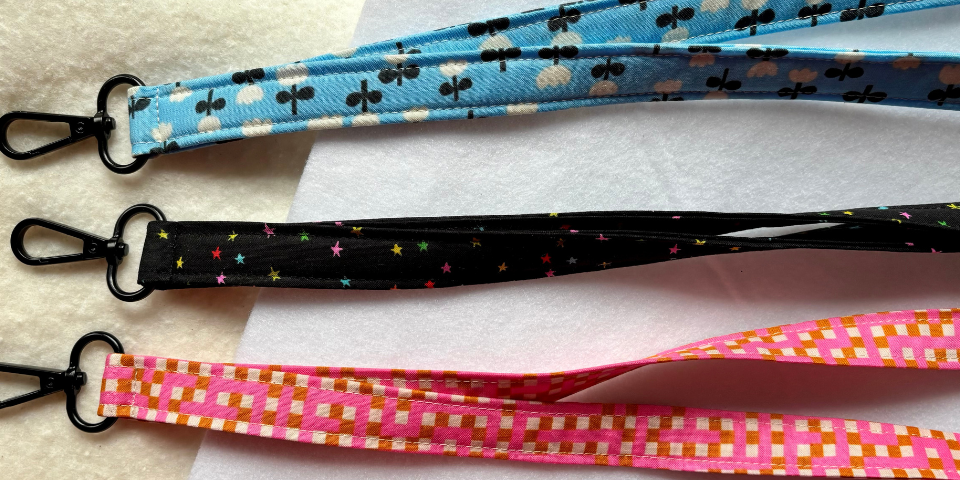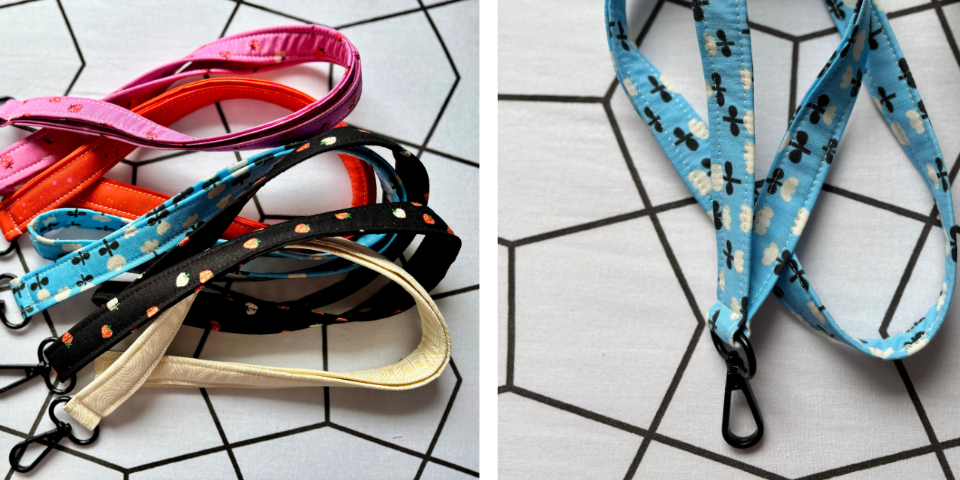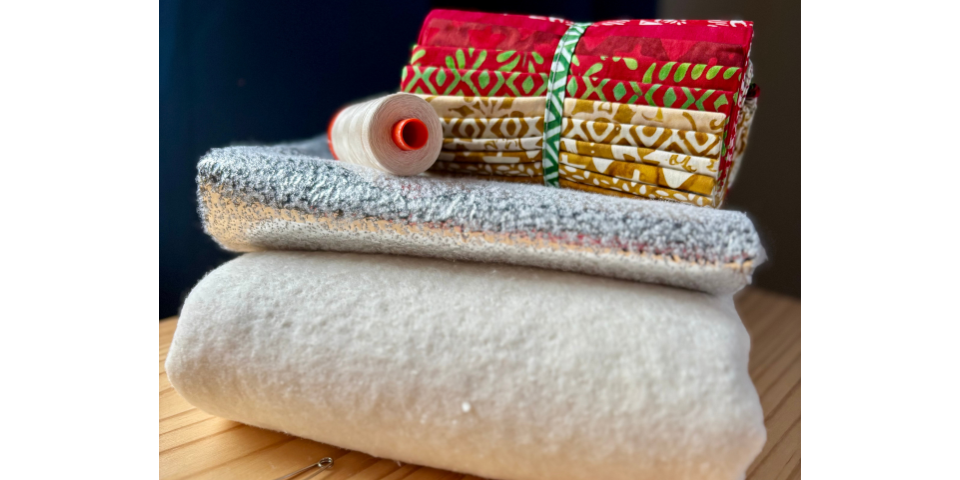Batik Table Runner Tutorial
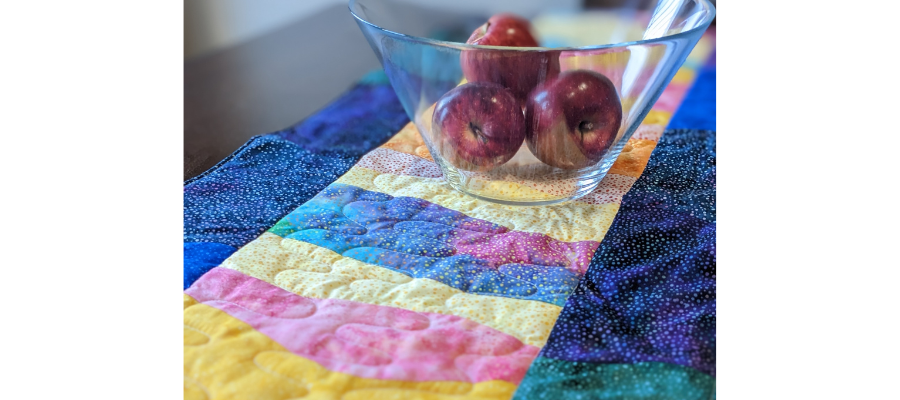
Try your hand at improv piecing with this simple, lava lamp-inspired table runner project. No two will look the same!
Our table runner is made with Hoffman Bali 885 Dot batik fabrics, but you can use any Layer Cake you like.
Seam allowances are ¼” unless otherwise stated.
Finished Size: 44″ x 17″ approx
Difficulty: Intermediate
Time to make: 2.5 hours
Here’s what you’ll need:
- Sewing machine
- Cutting tools: rotary cutter with a fresh blade, mat and ruler
- Layer cake – 22 pieces for the size shown
- Scrap of batting measuring at least 19″ x 45″
- Erasable fabric marker
- Pins or clips
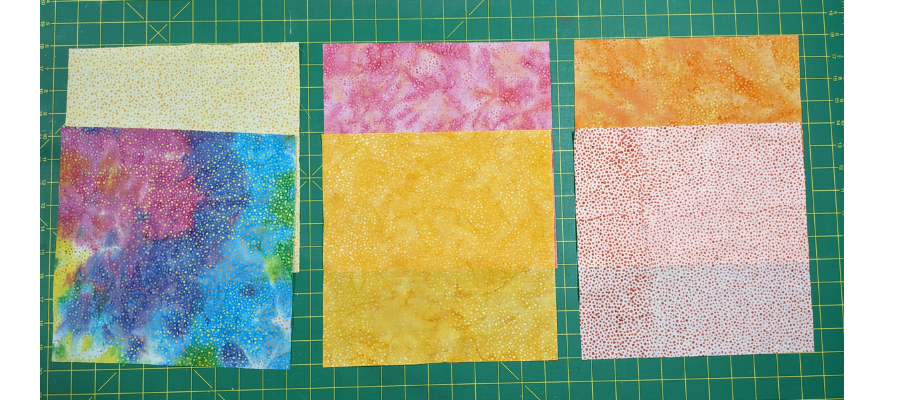
Take the six lightest layer-cake pieces and make three pairs, right sides facing up; not together.

With a sharp blade installed, rotary-cut across each of the two-piece sets twice in a gentle S-curve, dividing roughly into thirds. Start and finish your cuts with your blade positioned at 90 degrees from the edge of the fabric so that they are easier to match and sew together.
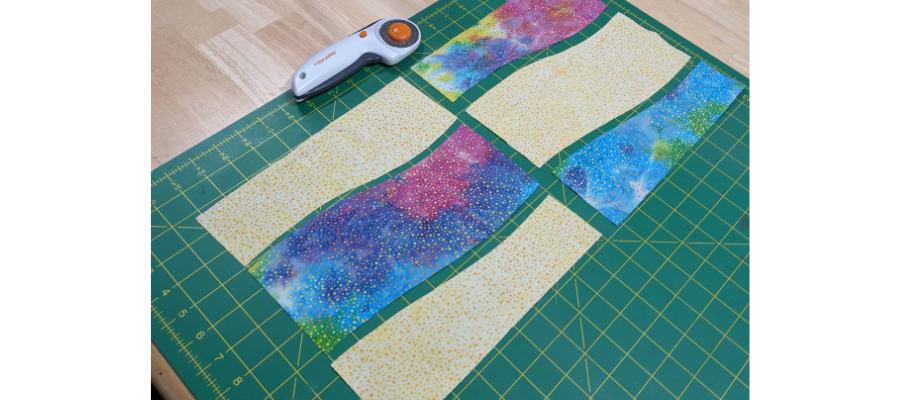
Divide the cut pieces into two arrangements, so that the fabrics alternate.

Place the fabric pieces right sides together, matching the top edge, and sew slowly. The curves will go in opposite directions, so ease the pieces together a few stitches at a time, being careful not to pull at the fabric and distort it. Repeat for the second seam and press toward the lighter fabric.
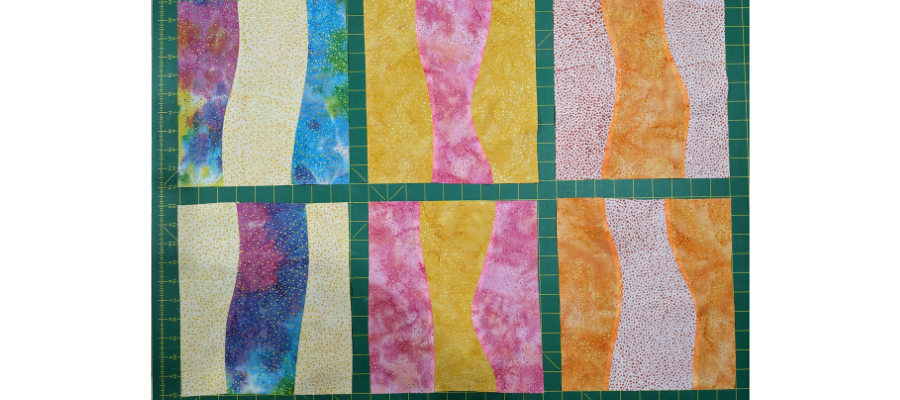
Make six blocks, and trim slightly if needed. Decide on the order and orientation of the blocks to be sewn into one long row.

To ensure there are no straight edges between blocks, you will be cutting and sewing another curve to join them. To do this, mark an erasable line 1″ from the edge of one block, and overlap the neighbouring block up to the line, with both blocks facing up. Pin in place and make another gently curving cut.

Discard the remnants and sew together in the same way as before. Continue until the whole strip is completed and press.

Trim the length to 44″ and the width down to 9 ½”, cutting evenly from each side. You may need to fold the runner in half to trim these longer edges.
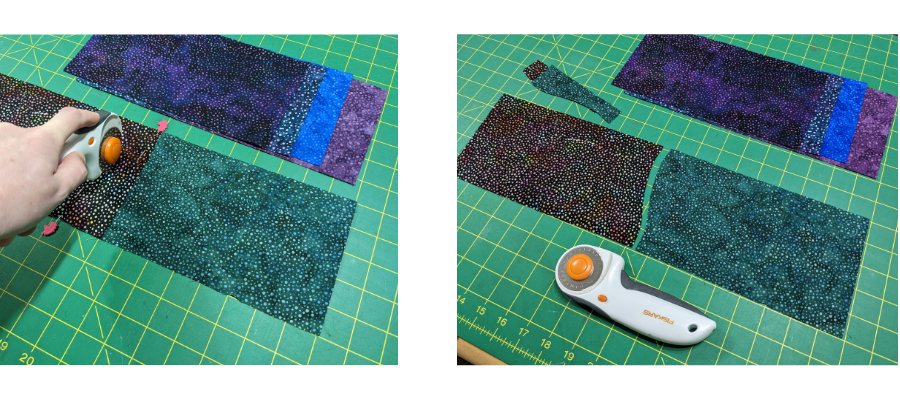
Take a darker six-layer-cake piece and cut it in half to make 12 5″x10″ pieces. Make two piles with one of each colour. With rIght sides facing up, overlap the shorter sides by 2″ and make cuts as before.

Sew these together until you have two strips of six pieces and press. Trim the length to match the length of the centre (44″) and the width to 4 ½” to remove any uneven areas.

Sew the strips onto either side of the centre piece. Flip the direction of one strip so that the matching colours are at opposite ends of the table runner and press the seams toward the darker borders.

To construct the back, choose 10 layer-cake squares and sew them together in pairs. Press the seams in opposite directions so that when you sew these pairs together, the seams interlock in the centre and the points are easier to match. Sew and press.
Cut the backing fabric down evenly to match the same size as the front (17 ½” x 44″).

Smooth the completed top onto the batting. You can spray-baste if you wish. Trim the excess batting from around the edges. Place the backing piece on top, right sides together.

Clip or pin the layers together and sew all the way around the edge, backstitching at the beginning and the end, and leaving a 6″ turning gap at one end.
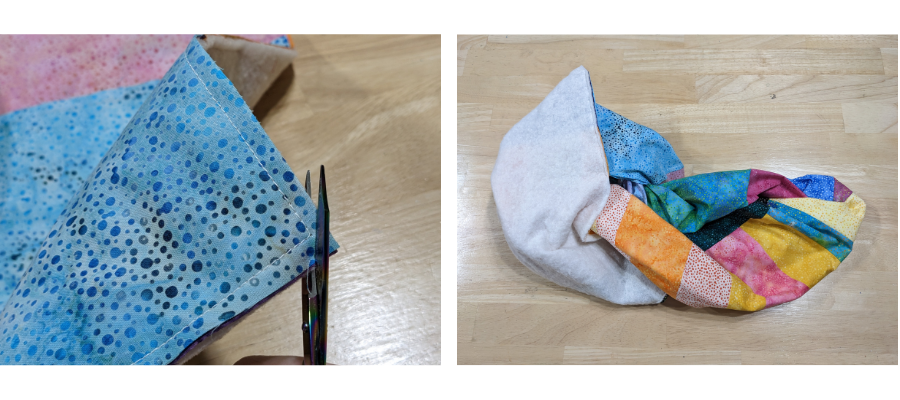
Snip the corners, making sure not to cut into the thread. Turn the table runner right side out.
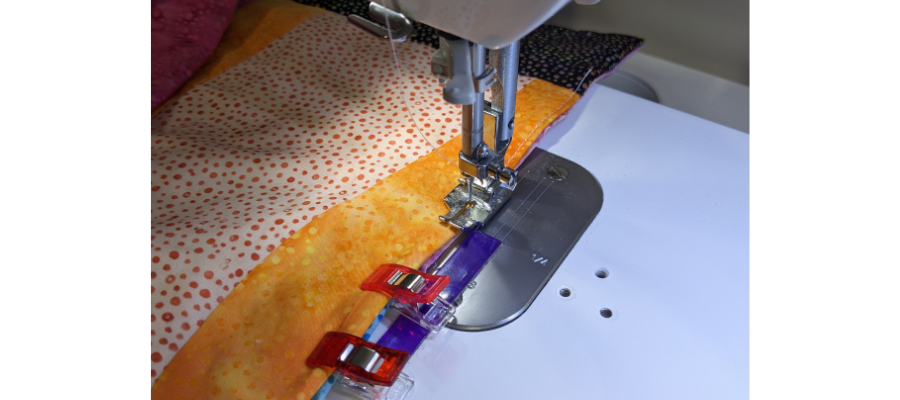
Press, paying close attention to the open edge so the seam allowance is turned under. Top-stitch ⅛” from the edge, continuing around the whole piece.

Quilt the runner any way you like. To match ours, stitch in the ditch between the borders and the centre, and free-motion-quilt some improvisational flowing curves. Bury your threads and you’re finished!
Design Note: Table runners are generally one-third the width of the table they are to be used on. If you need to add additional width, you can make this pattern around 9″ wider (26″) by using full layer-cake pieces for the sides instead of cutting them in half. To add an extra 14″–15″ in length, use eight lighter layer-cake pieces for the centre (four pairs) and an additional two pieces (four when cut in half) for the sides. You will also need to add an extra pair of layer-cake squares on the back.
Looking for more tutorial and project ideas? Check some other ideas out here.
Hoffman Bali Dot Batiks are available across Canada. Ask your local quilt shop if they have them in store. And please tag us in your Hoffman Batik creations on Instagram or Facebook! #TrendTexFabrics @trendtexfabrics
